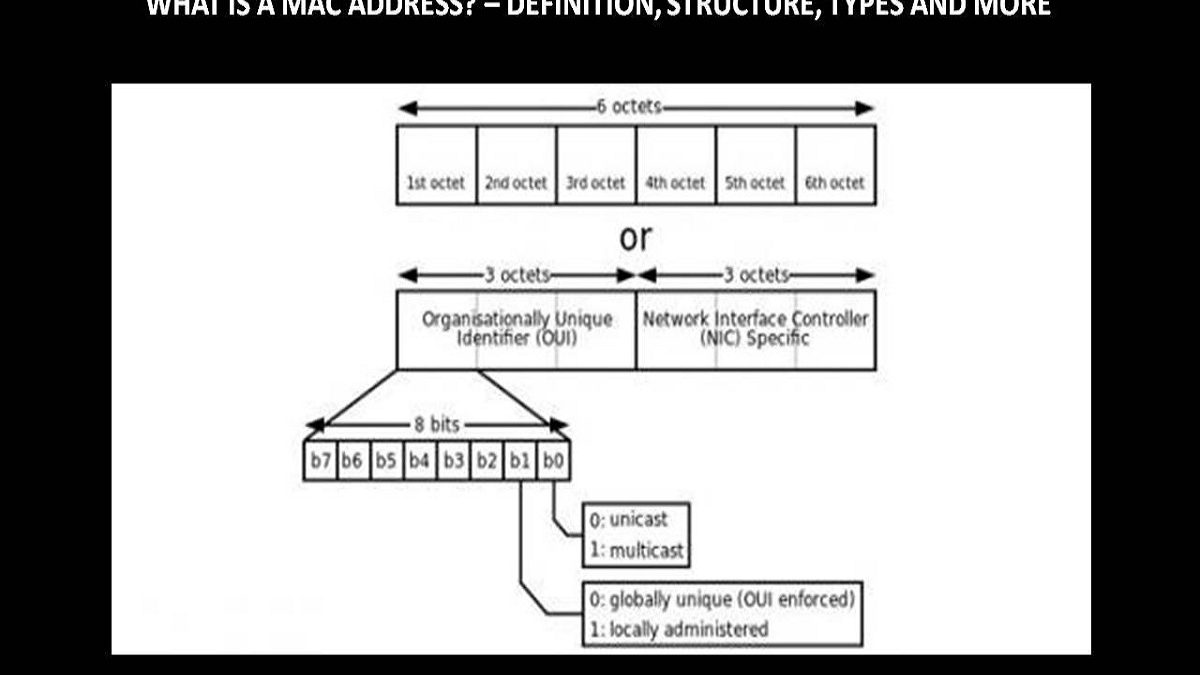Table of Contents
MAC address Definition
You do not need to be a computer expert to know what a MAC address is. It is a unique address for devices with network capabilities. We explain what you should know about the MAC address.
Explanation: What is a MAC address?
- “MAC” stands for “Media Access Control,” this address is used to identify your device.
- The MAC address assigns to your network adapter. You need this to be able to use the Internet via LAN or WLAN.
- The 12-digit code is displayed in the hexadecimal system and is unique to your device. The first six digits indicate from which manufacturer your network adapter is. The second six numbers represent the specific number for your device.
- On Windows devices, the MAC address is also displayed as a “physical address,” on Apple devices as “Airport ID.”
Structure of the MAC address
The structure of the 48-bit address is precisely defined. The first two bits specify the type of speech. Among other things, they determine whether it is a multicast or broadcast address or a globally unique individual address.
Subsequently, until the end of the third byte, the manufacturer identifier of the network card or hardware follows. The bit sequence is called Organizationally Unique Identifier (OUI) and is awarded by the IEEE to the various manufacturers of the appliance.
The manufacturer specified the last three bytes of address. It assigns this bit sequence only once, thus ensuring that the complete address is unique. The spelling is usually in hexadecimal form, where hyphens or colons separate the bytes.
The different forms of representation of MAC addresses
There are various forms of representation of MAC addresses. A distinction can be in between the canonical and the bit-reversed description. The most common is the authoritative description. It consists, as already described, of a sequence of two-digit hexadecimal numbers, separated by a hyphen (sometimes also by a colon).
Less common is the bit-reversed or non-canonical form.
The function of MAC addresses in the network
The essential feature of the MAC addresses is the delivery of a frame on layer 2. If the IP destination address is in the same subnet in an IP network, the delivery is made directly to the physical address of the target computer. If the IP address belongs to another subnet, the layer two frames address to the MAC address of the responsible router (usually the default gateway).
The router is responsible for switching the packet to the next network node or the destination computer and also sends it on the following network section to a MAC address. At the same time, the router replaces the source MAC address of the source frame with its own.
Computers with multiple network interfaces have multiple MAC addresses. If the hardware of a network interface exchanges, its address also changes.
Unique MAC addresses and their function
In addition to the globally unique MAC addresses for the identification of network interfaces, addresses with special features exist. These are, for example, MAC multicast and MAC broadcast addresses. With the help of these addresses, Ethernet frames can be sent simultaneously to several or all stations of a broadcast domain.
The broadcast address in Ethernet consists of all ones and is FF-FF-FF-FF-FF-FF. Broadcasts can create a heavy burden on a network. A broadcast storm, triggered by parallel connections between switches, can paralyze the entire system.
Can you change your MAC address?
It is not the manufacturer’s intention to change a MAC address. However, with various tools or programs, this is possible so that the MAC address can vary with specific programs. For Windows operating systems, for example, there is the SMAC tool with which it can change as required.
Conclusion
Basically, you can find MAC addresses in all the electronic goods. It is not necessary to find the MAC addresses, as it is know to all the networks by default

